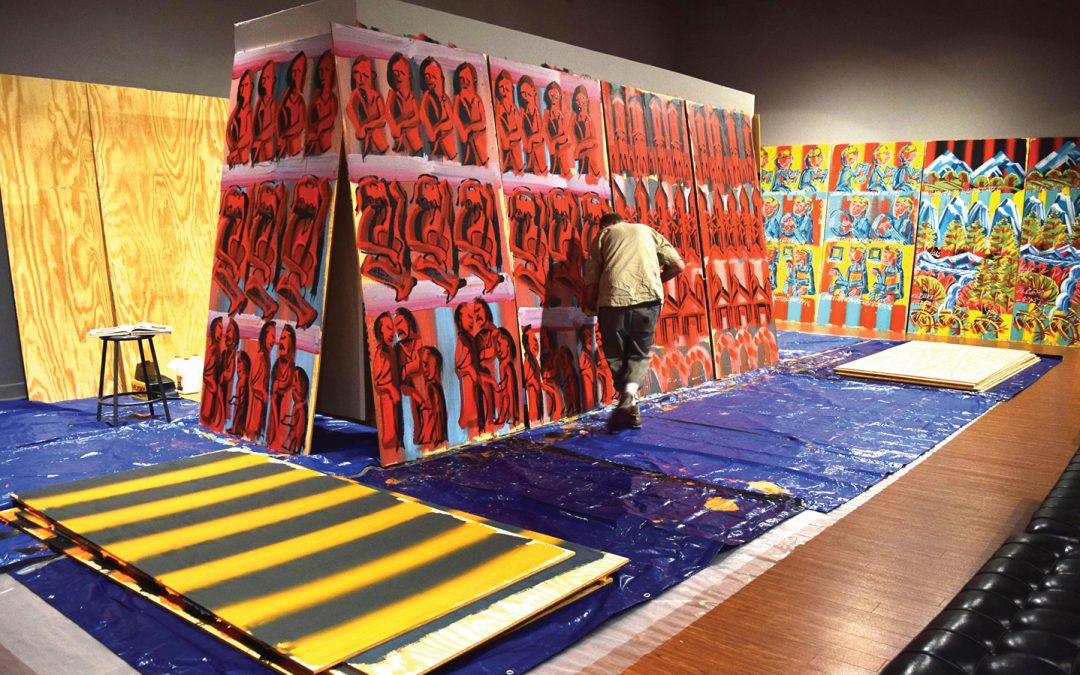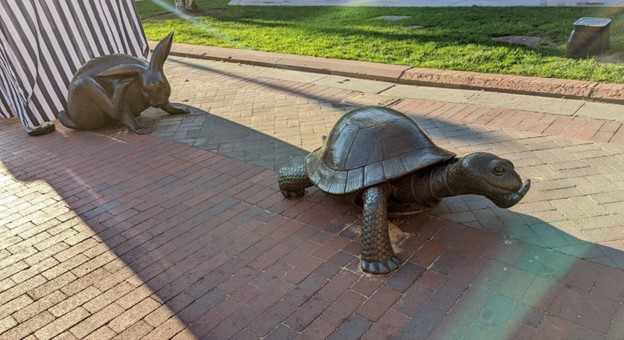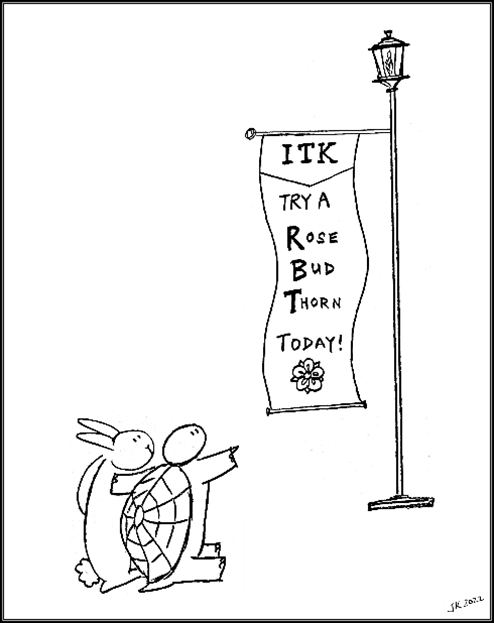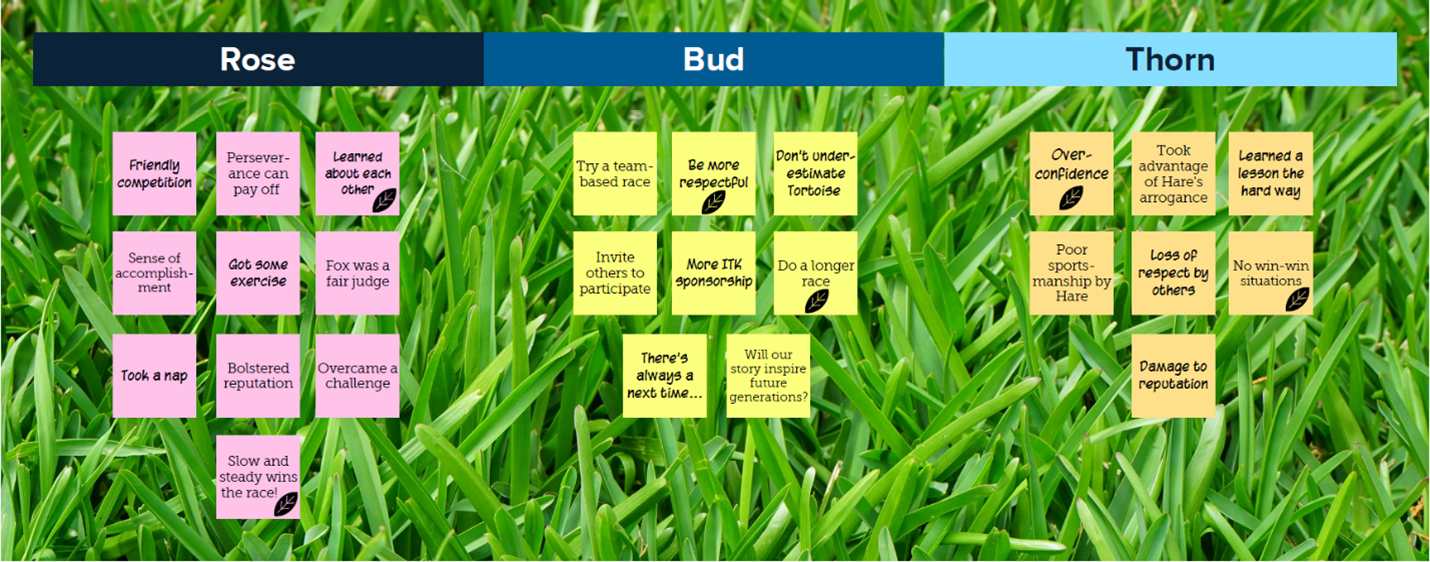
by dbward | Apr 24, 2023 | Uncategorized |
This week’s blog post is by Patty McDermott
I’m lucky enough to have learned PreMortem from its creator, Gary Klein… twice!
Twenty years ago as a new college graduate in an exciting project kickoff, I remember diligently taking notes when the company owner, Gary Klein, took the meeting in a new direction. He described a future in which the project failed and asked us to come up with reasons for the failure. I felt pressure to say something insightful to show that I belonged in that conference room. The project details are long forgotten but I remember Gary’s approach getting everyone talking and bringing us together as a team.
Fast forward two decades. Gary Klein was teaching a PreMortem Masterclass at the 2022 Naturalistic Decision Making Conference in Orlando, and I jumped at the chance to participate.
Like a true mastermind trainer, Gary demonstrated his point in the Masterclass so naturally that we didn’t even realize it was part of the lesson. Gary gave us some time to review the workshop agenda before asking if the audience had any questions or comments about the plan.
Silence.
I will admit that I noticed some oddities in the order of events but passed it off as, “Gary must have a reason.” Gary then asked if anyone had silently questioned the agenda in their head. Hands shot up, mine included. The audience noticed several things that could have impacted the understandability of the class. Yet none of us said a word when asked. As Gary summarized, “People don’t speak up when they have a chance. That is why we need a PreMortem.” Mind. Blown.
People hesitate to speak up and point out weaknesses for many reasons, ranging from social pressure, lack of time, to wanting to keep things harmonious. The power comes from turning the dynamic on its head – changing the mindset to focus on critical thinking. Tap into people’s desire to be insightful and show off their cleverness. I think back to that conference room at the start of my career and remember fizzing with excitement of sharing an idea that no one else had considered.
Since Gary created the PreMortem over 30 years ago, it has been adopted all around the world. Here at MITRE, the PreMortem is one of ITK’s most popular tools. To help you get the most of it, check out these six tips.
- The PreMortem can be done in less than 30 minutes. You don’t have to dedicate an entire hour to get impactful results.
- When setting up the exercise, be playful. Describe a scene in which you have a crystal ball. The crystal ball doesn’t lie! By looking into it, you know the [project/tool/event] failed. But it’s not a good enough crystal ball to show you why it failed. Perhaps you need to insert more money to see the reasons for the failure. The point is that you need the stakeholders in the room to fill in the blank and describe the reasons for the failure.
- Give participants two minutes to write reasons for the failure. Ask them to get specific: go beyond answers such as “budget, time, or management.”
- Choose someone to start and go around the room. Only accept new and different answers to keep things moving.
- Write answers in a consolidated list that everyone can see.
- Give participants two minutes to write answers to the query, “What can I do to reduce chance of a fiasco?”
At the end of the session, participants will have used their creativity to list potential reasons for failure. But don’t end on a note of doom and gloom! Getting participants to describe proactive ways to avoid failure will set them up for success. They will leave the session with tangible early warning cues that things may be in trouble. The team can also make choices early on to mitigate problems before they even have a chance to occur.
I hope these tips encourage you to incorporate the PreMortem in your repertoire and help you conduct an efficient and effective session!
(image developed using Midjourney)

by dbward | Jan 16, 2023 | Uncategorized
One of my most memorable ITK experiences in 2022 involved leading 70 people through a Mission Canvas exercise. We divided the team into ten groups of seven, which means over the course of the hour I got to see 10 Mission statements take shape, ten different descriptions of this team’s present activities. The participants were not only were exposed to a variety of perspectives, they also uncovered the things they all have in common. It was a great example of how ITK helps teams develop “clarity and consensus,” and a cool affirmation that such things can even be established with a really big group.
In addition to the ways this benefited the participants, this experience was transformative for me, in large part because i got to see so many things happening at once. One thing I discovered is that I don’t love some parts of our canvas. Little things that previously seemed like a minor quirk I could easily dismiss or work around now loomed large as an unavoidable flaw in the canvas. I hadn’t really noticed this before – and now I couldn’t miss it. So we’re gonna fix that canvas – watch for an updated version, coming (hopefully) soon!
This experience brings to mind an observation from prolific artist Steve Keene (his website says “Over 300,000 paintings sold or given away“). In an interview, he explained “I love the idea of doing sixty paintings a day, and finishing them, more than the idea of trying to make one that I think is perfect. The whole system is based on trying not to beat myself up.” Volume has a certain magic about it, creating a sense of freedom from perfectionism and enhancing our understanding of the work (and the tools themselves).
I find Keene’s approach fascinating and inspiring. I love his emphasis on doing the work, on experimenting and trying a bunch of things, rather than trying to get it absolutely correct on a single try. It’s a refreshing alternative to the self-defeating perfectionistic approach, which prevents progress and does not, in fact, produce high-quality outputs. You know what does lead to creative, high-quality work? Making 60 paintings a day, and not just learning from each one, but learning from them in aggregate.
My suggestion – don’t just do one ITK session or come up with a single idea. Do ten sessions. Do sixty. Do them back to back. Do them simultaneously. Do them with 70 people in the room at once. As the brilliant Stephanie Medicke observed a few years ago, “The most dangerous thing you can do is go with the only idea you have.” So try out some different ideas, by doing more than one thing… or by doing something more than once.
To be super clear, this isn’t about pursuing quantity over quality. That phrase drives me bonkers. Instead, this is about recognizing that ramping up the quantity of our output is a path to improving the quality of our output. Sort of a “practice makes perfect” thing… except perfect isn’t the goal either (but I digress).
Back to the point – when a few of us attended South By Southwest last March, we heard Jeremy Utley provide a great definition of creativity that ties this all together nicely: “Creativity is doing more than the first thing you think of.”
So if you want to be creative (and I bet you do), the secret just might be… to pump up the volume, increase your output by a factor of ten, and expand your participant list beyond the usual suspects. Let each individual effort be a little bit wrong… and when you put it all together, you just may find it’s very, very right.
(image credit: courtesy image from Fort Myers Florida Weekly)

by dbward | Oct 3, 2022 | Misc Awesomeness |
As the fable goes, the Tortoise and the Hare competed in a race—which culminated in the Tortoise winning and the (well-rested) Hare bemoaning an unexpected loss. Aesop’s narration may stop there, but the story itself doesn’t need to end. Viewed through the lens of the Innovation Toolkit, the Tortoise and the Hare would benefit from performing a retrospective analysis of their race, so they can identify lessons learned for the future.
Enter the Rose Bud Thorn tool!
Indeed, let’s have a little fun (we’re learning from anthropomorphic animals, after all), and say that the Innovation Toolkit was the race’s sponsor and that the Tortoise and the Hare—and the Fox judge—continue in their fabled roles. What happens next?
…
The Tortoise and the Hare linger at the finish line of the race, both eyeing the ITK banner fluttering in the wind. “What’s a Rose Bud Thorn?” asks the Hare distractedly.
“That’s a good question,” says the Tortoise, looking around for help. “Why don’t we ask our friend, Fox?”
“But… the race,” says the Hare. “I’m all ready to beat you if we try again!” However, the Tortoise has already started walking towards the Fox’s den. The Hare scrambles to catch up.
 “Fox!” the Tortoise is saying. “Could you tell us what a Rose Bud Thorn is?”
“Fox!” the Tortoise is saying. “Could you tell us what a Rose Bud Thorn is?”
“Why, yes, Tortoise and Hare,” replies the Fox. “The RBT is an innovation tool for evaluating an event after it occurs. A retrospective, in other words.”
“I lost the race,” says the Hare. “What else could it possibly tell us?”
The Fox gives the question fair consideration. “Well, losing the race would be a negative, or “Thorn”—for you, at least. A “Rose” is something positive, such as getting good exercise, and a “Bud” is an opportunity or a potential, such as trying a different strategy next time. Also, those are just examples from your perspective, not Tortoise’s.”
The Hare looks intrigued, and the Tortoise slowly nods, so the Fox supplies them with pens and colored sticky notes to construct a simple Rose Bud Thorn on the grass. The Hare’s writing is scribbled, whereas the Tortoise’s is quite neat. Once they finish jotting down ideas, the Fox moderates a discussion between them, starting with the Roses, then the Thorns, and then the Buds. At the Fox’s suggestion, they conclude the session by placing small leaves on the sticky notes that resonated with them the most.

Feeling inspired, the Tortoise and the Hare thank the Fox and head out across the forest. The Tortoise, never one to back down from a challenge, suggests doing a marathon together, and the Hare, with newly acquired humility, agrees. From behind them, the Fox calls out, “Have you heard of the Premortem tool? It helps you define success, and it’s often used after the RBT. You could try to use it before the marathon!”
The Tortoise and the Hare wave at the Fox in a friendly way, but they are too deep in their discussion to turn around now. The Fox shrugs and settles down on the grass for a well-deserved nap. Eyes closing, the Fox reflects on the eventful day before murmuring wryly into the forest air:
“There’s always more to learn, isn’t there? Sooner or later, they’ll be back…”
Try a Rose Bud Thorn (or Premortem) Today!

by dbward | Aug 15, 2022 | Uncategorized |
I always say that one of the nicest things you can do for an author is to tell someone else about their book. In keeping with that spirit, here’s a big list of books I absolutely adore. You’ll find some novels mixed in with the non-fiction, so please don’t dismiss the importance of reading non-fiction as part of your professional development.
What these books all have in common is that they are each awesome, they each made me think, and they each stuck with me long after I got to the final page. I hope you enjoy scanning through this list and you’re sure to find something good to read here.
- Crossing The Unknown Sea, David Whyte
- Disrupters, Patti Fletcher
- Orbiting The Giant Hairball, Gordon MacKenzie
- Imaginable, Jane McGonigal
- The Icarus Deception, Seth Godin
- Fight Like A Girl, Kate Germano
- The Pentagon Wars, James Burton
- The Heart of War, Kathleen McInnis
- How Come Every Time I Get Stabbed In The Back, My Fingerprints Are On The Knife, Jerry Harvey
- Zilch, Nancy Lublin
- Lab Girl, Hope Jahren
- The Excellence Dividend, Tom Peters
- Yes To The Mess, Frank Barrett
- Reality is Broken, Jane McGonigal
- The Reflective Practitioner, Donald Schon
- Intertwingled, Peter Morville
- Space Opera, Catherynne Valente
- To Engineer is Human, Henry Petroski
- Understanding Comics, Scott McCloud
- Art Thinking, Amy Whitaker
- Presentation Zen, Garr Reynolds
- Faster, Better, Cheaper, Howard McCurdy
- Just For Fun, Eric Torvalds
- How To Be Fearless, Jessica Hagy
- Complications, Atul Gawande
- Progress In Flying Machines, Octave Chanute
- Ignore Everybody, Hugh MacLeod
- The Calculating Stars, Mary Robinette Kowal
- Snowcrash, Neal Stephenson
- Everything All At Once, Bill Nye
- Tilt, Nicholas Shrady
- Wood, Wire, Wings, Kirsten Larson
- A Dream of Flight, Rob & Jef Polivka
- Project Hail Mary, Andy Weir
- Syllabus, Lynda Barry
- Understanding Comics, Scott McCloud
- The Next 100 Years, George Griedman
- 2034, James Stavridis
- Ghost Fleet, August Cole & Pete Singer
- How to Write One Song, Jeff Tweedy
photo credit Dan Ward

by dbward | Aug 8, 2022 | Uncategorized
Last week I wrote a short, simple blog post about a cool problem-solving technique called the TRIZ Prism. It’s a tool I love, a topic I’m very familiar with, and I’d already filmed a short video explainer on the topic so I was able to incorporate that into the blog post too.
For no particular reason, I had the hardest time writing that thing! I drafted about a dozen different opening lines, crossed them all out immediately, and then wrote them all again (none got better the second time).
I wrote myself in circles and brilliantly imitated every “writer having a hard time” montage you’ve seen in any movie where writers have a hard time. Crumpling up pages and throwing them across the room into a trashcan (and missing). It looks way more fun in the movies than it feels in real life.
The final version is… fine. It’s short. It’s focused. It sets up the “go watch the 3-min video” message. It does everything I wanted the post to do. And it gives no indication of how much struggle went into that piece, no indication of how many pages ended up in the trash.
That might be the best thing about it (aside from the fact that it’s finished). This unremarkable blog post actually took FOREVER to write. It was hard to write (again, for no particular reason). So I wanted to share the behind-the-scenes story as an encouragement to anyone who might be under the mistaken impression that writing is easy or that your own struggles are somehow rare or unusual. If (when!) you find it difficult to find the words, just know you’re not alone… so keep pressing on.




 “Fox!” the Tortoise is saying. “Could you tell us what a Rose Bud Thorn is?”
“Fox!” the Tortoise is saying. “Could you tell us what a Rose Bud Thorn is?”

